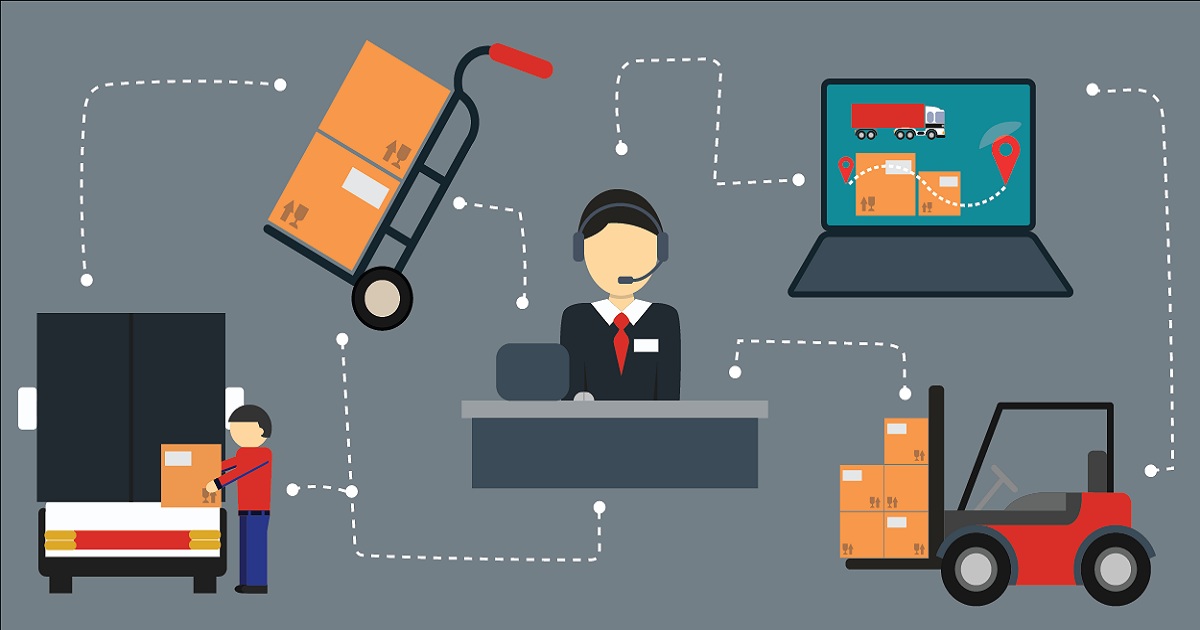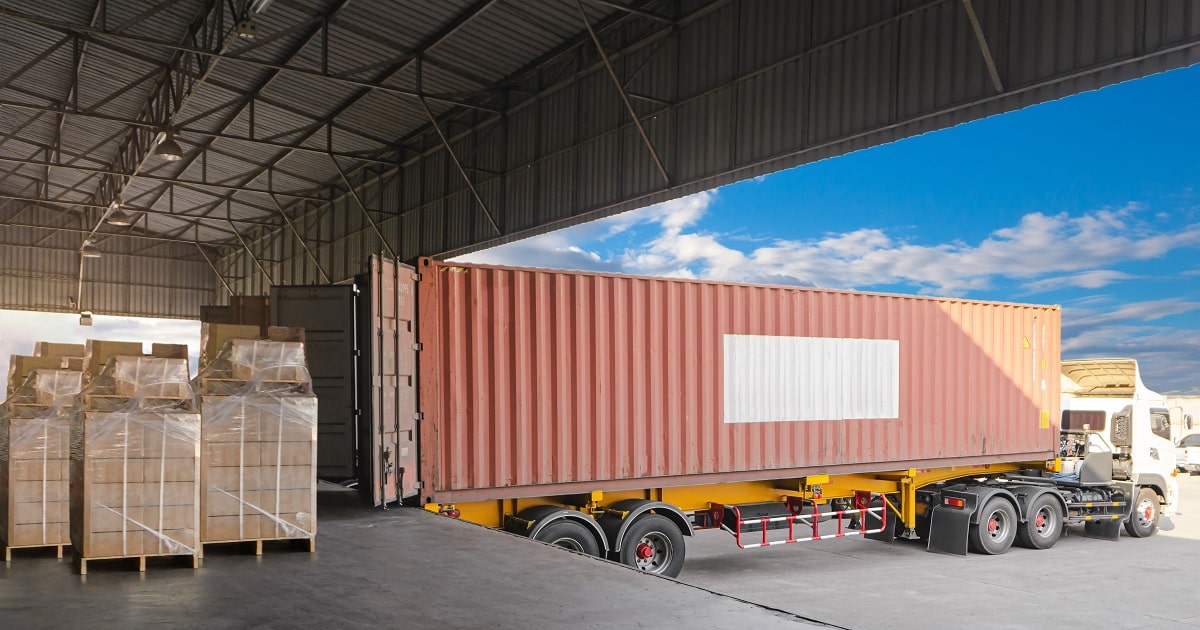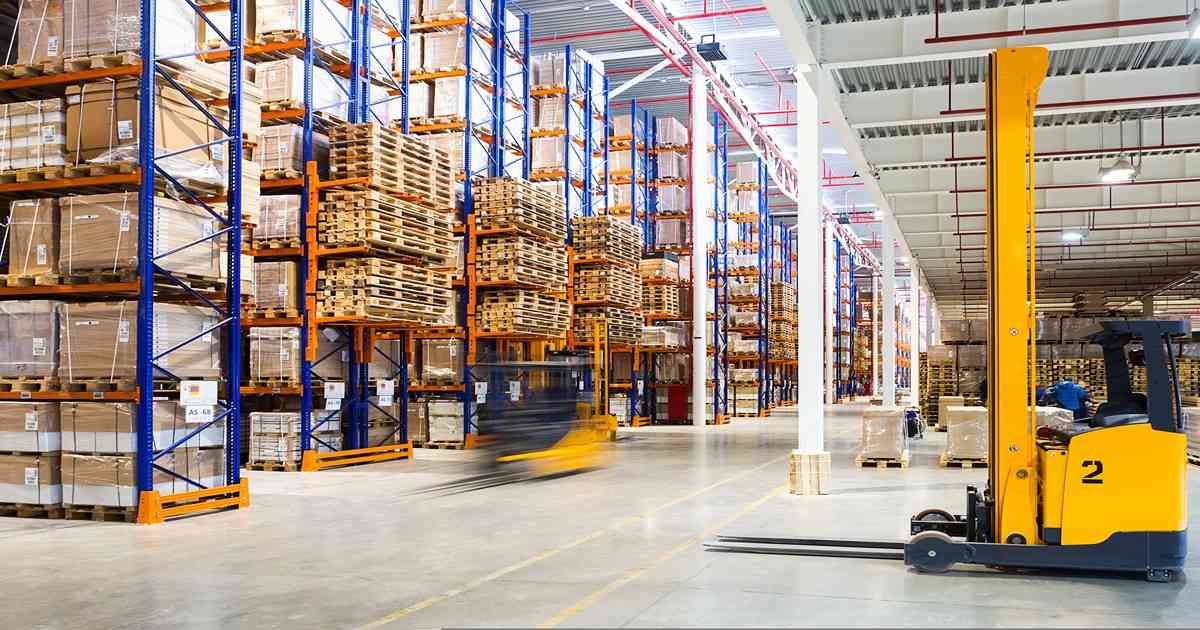
Warehousing and Distribution
Article | June 16, 2023
Transportation has always been the cornerstone of the supply chain and arguably its most targeted area when something goes wrong with a shipment. Why is my package late? What is my load’s current location? What is the ETA for my order? These are the daily questions that come from warehouses, distribution centers, and their end consumers – and they’re being asked now more than ever. Answering these questions requires holistic visibility into your supply chain that can only be achieved with the right mix of transportation technology and data management.
Read More

Warehousing and Distribution
Article | July 17, 2023
In the past couple of years, supply chain management has witnessed massive disruption. The implications of the pandemic have put pressure on manufacturers to revisit and reimagine how they manage their supply chains. This is why ERP software is so mission critical in supply chain management. It not only helps supply chain chiefs reduce overhead costs but also enhance efficiencies and timely deliveries.Here are a few ways ERP plays a role in supply chain management to keep it moving.
Complete Visibility
Having a 360-degree view of the supply chain is integral to making the right decisions regarding procurement and purchase of materials and inventory. It also allows suppliers to have complete control and course correct when necessary. The insight into the complete supply cycle allows suppliers to respond to customer queries better.
Inventory Tracking
ERPs are truly a one stop shop for manufacturers. They feature extensive inventory tracking on one system so manufacturers are in the loop about inventory control and can better optimize their inventory and resources. For manufacturers it is crucial to know where their inventory is, what has been shipped, what is on hand at all times. With ERPs, it becomes cheaper to keep a stock of the inventory and place orders when it’s running low.
Vendor Performance
Vendor performance is an essential aspect of supply chain management. Being able to compare vendors, measure certain quality and quantity metrics and identify bottle necks help suppliers choose the right vendor as well as gives purchasing departments the power to negotiate for better pricing by consolidating purchase. ERPs allow suppliers to do all the above and more.
Procurement
Procurement of goods can be a complex process if done without the right tools. It also impacts the whole supply chain so it is doubly imperative to ensure the procuring and supply of goods is on time. This is especially true in an environment of custom manufacturing. Add to that the requirement of procuring products with lengthy lead times, manufacturers need to take into considerations product that need to be ordered long before they are even designed. ERPs allow manufacturers to keep all departments including engineering and warehousing to work in sync and plan to procure goods on time.
Real-time Reports
Reporting is labor intensive and can be inefficient when it comes to gathering and processing data. With ERPs, manufacturers can generate reports in real-time and all manual data collection processes are replaced with automation, saving time and money in viewing the insights into the movement of products in the supply chain. It enables manufacturers to get a better understanding and make timely decisions that improve the overall efficiency of the supply chain.
To Conclude
ERP systems offer endless opportunities for manufacturers to improve their processes, save time and resources and optimize and enhance inventory planning. With the right tools, it is possible to establish supply chain management that outperforms and is resilient even in disruptive times.
Read More

Warehousing and Distribution
Article | June 27, 2023
Efficient demand forecasting techniques transform supply chain management, help optimize inventory levels, streamline operations, improve customer satisfaction, and achieve a competitive edge.
Contents
1. How Accurate Demand Forecasting Impacts Business Operations and Profitability?
2. Navigating the Pitfalls of Traditional Demand Forecasting
2.1 Limitations of Manual Forecasting Methods
2.2 Inaccuracy and Inconsistency in Demand Prediction
2.3 Multiple Products and Markets Challenges
2.4 Influence of External Factors on Demand Forecasting
3. Advanced Demand Forecasting Techniques for Supply Chain Management
3.1 Statistical Forecasting
3.2 Collaborative Demand Planning
3.3 Demand Sensing and Real-time Data Analytics
3.4 Agile Supply Chain Management Practices
4 Summing up
1. How Accurate Demand Forecasting Impacts Business Operations and Profitability?
Accurate demand forecasting plays a vital role in determining the operations and profitability of a business. By anticipating future demand, companies can more effectively plan their production, inventory management, and supply chain activities to meet customer needs while minimizing costs.
Additionally, accurate demand forecasting can aid businesses in enhancing customer satisfaction by proactively meeting customer needs and expectations, improving customer experiences and increasing customer loyalty. To generate actionable insights that drive informed decision-making, businesses must leverage advanced analytics and predictive modeling techniques that combine data from various sources with industry-specific knowledge and expertise.
“Businesses that leverage advanced analytics and predictive modeling techniques for demand forecasting report an average of 5% improvement in their supply chain efficiency.”
(Source: A survey by Deloitte)
Supply chain businesses frequently rely on sales data from the past, which may not be sufficient in the complex and rapidly changing business environment. Businesses might not observe an improvement in operations and profitability if they rely solely on conventional methods.
2. Navigating the Pitfalls of Traditional Demand Forecasting
As businesses strive to optimize their supply chain operations and meet customer demand, traditional demand forecasting methods can often hinder their efforts. In this context, it is essential to navigate the pitfalls of such techniques to achieve success in supply chain management.
2.1 Limitations of Manual Forecasting Methods
Manual forecasting methods have limitations that can affect demand forecasting accuracy in supply chain management. Frequently based on historical data, these methods can overlook emerging trends in supply chain management and alterations in customer behavior. In addition, manual processes are time-consuming, prone to error, and incapable of incorporating real-time supply chain data. As a result, businesses struggle to optimize supply chain operations and meet customer demand.
In addition, traditional forecasting methods can influence the ability to accurately predict demand, resulting in overstocked inventory, delivery delays, and, ultimately, poor customer satisfaction. Inaccurate demand forecasts can also result in poor purchasing decisions and increased carrying costs, negatively impacting profitability.
2.2 Inaccuracy and Inconsistency in Demand Prediction
Inaccuracy and inconsistency in demand forecasting pose significant obstacles in managing the supply chain. This is the case in the dynamic business environment, where market conditions can change rapidly, making it challenging for companies to keep up with shifting demand patterns. As traditional demand forecasting methods depend heavily on historical data, they produce inaccurate forecasts that do not reflect real-time market changes.
In addition, inconsistency in demand forecasting can also result in a mismatch between supply and demand, leading to missed opportunities or excess inventory. As a result, creating an effect on company’s bottom line in addition to customer satisfaction.
2.3 Multiple Products and Markets Challenges
Accurate demand forecasting is crucial to the success of supply chain management. When there are multiple products and markets to manage, it becomes a challenge for traditional demand forecasting. Different products and markets may have varying demand patterns and drivers, making it difficult for businesses to accurately forecast demand.
Manual processes and siloed data can hinder visibility and the ability to identify cross-product or cross-market trends, making supply chain optimization operations and meeting customer demand more complex. Managing multiple products and markets is one of the challenges of traditional demand forecasting when businesses operate in various markets with varying customer preferences and demand patterns for products.
2.4 Influence of External Factors on Demand Forecasting
External factors can significantly impact the demand forecasting accuracy for supply chain optimization. These factors are often unpredictable, and conventional methods may not account for them. The external factors affecting the supply chain include natural disasters, economic recessions, and sudden changes in consumer behavior.
In addition, political and regulatory modifications, such as tariffs or trade agreements, can affect the supply and demand of particular products. Therefore, businesses must incorporate these external factors into their demand forecasting models and advance the process, as traditional demand forecasting methods cannot predict accurate future demand patterns and ensure optimal supply chain operations.
3. Advanced Demand Forecasting Techniques for Supply Chain Management
To avoid the above-mentioned pitfalls, companies need to adopt advanced demand forecasting techniques that enable capturing and analyzing huge data from various sources to generate accurate and real-time demand forecasts.
3.1 Statistical Forecasting
Statistical forecasting is an advanced method for demand forecasting in supply chain management that utilizes complex algorithms and statistical models to analyze historical data, identify trends, and generate forecasts. This method employs numerous statistical techniques, including regression analysis, time-series analysis, and exponential smoothing, among others.
Statistical forecasting can help businesses overcome some of the limitations of traditional manual forecasting methods because it is more objective, data-driven, and capable of identifying trends and patterns which are not apparent with manual forecasting methods. As a result, by utilizing statistical forecasting, businesses can increase demand forecasting accuracy, optimize inventory management, and better align supply and demand, resulting in enhanced customer satisfaction, greater efficiency, and lower costs.
3.2 Collaborative Demand Planning
Collaborative Demand Planning combines intensive forecasting algorithms to predict future demand and a set of ML techniques to achieve better demand forecasting. It involves collaboration between suppliers, customers, and other stakeholders. The advanced data and insights sharing technique improve the comprehensive understanding of demand drivers and trends, leading to more accurate demand forecasting. The collaborative approach enables real-time adjustments to demand forecasts, which can help businesses respond promptly to market conditions and customer demand changes.
In addition, using advanced analytics and machine learning algorithms can help identify patterns and trends that would otherwise go unnoticed. That enables businesses to optimize inventory levels, reduce under and overstocking, and enhance customer service levels. In the dynamic business environment, it helps transform the supply chain that is better equipped to meet the ever-changing demands of customers.
3.3 Demand Sensing and Real-time Data Analytics
Demand Sensing and Real-time Data Analytics are advanced demand forecasting techniques that can assist businesses in overcoming the challenges that multiple products and markets pose to the supply chain. By utilizing real-time data from various sources, such as social media, point-of-sale systems, and weather reports, businesses can better understand customer demand patterns, adjust inventory and production planning, reduce delay, and increase responsiveness.
In addition to implementing demand sensing, businesses can begin with sell-in data obtained from supply chain planning or an ERP system in supply chain management and then incorporate all relevant data sources and external factors to broaden the forecasting horizon.
3.4 Agile Supply Chain Management Practices
Agile supply chain management practices are a collection of methodologies and strategies emphasizing supply chain operations' adaptability, responsiveness, and flexibility. These practices involve utilizing real-time data analytics, collaborative planning, and other advanced technologies to enable businesses to respond swiftly to changes in customer demand, market conditions, and other external factors.
Adopting an agile model allows the organization to act swiftly and decisively and achieve successful business outcomes despite adverse conditions. Agile supply chain management practices can give companies greater visibility and control over their supply chains, enabling them to adapt more effectively and efficiently to fluctuating market conditions in the context of external factors influencing demand forecasting. By cultivating a culture of continuous improvement, innovation, and customer value, agile supply chain management practices have the potential to transform into modern supply chain.
4. Summing up
Demand forecasting accuracy is crucial for supply chain management and profitability. Manual forecasting methods hinder operational optimization and customer demand fulfillment. Customer satisfaction, purchasing decisions, and carrying costs suffer from inaccurate forecasting. In order to avoid these pitfalls, businesses can leverage statistical forecasting and collaborative demand. These methods recognize trends and patterns, optimize inventory levels, reduce over- and under-stocking, and improve customer service using advanced analytics and machine learning algorithms.
As the supply chain evolves and becomes more complex, businesses must adopt advanced demand forecasting techniques. Implementing these techniques will enable businesses to optimize their supply chain management by better-aligning supply and demand, resulting in increased productivity, decreased costs, and ultimately increased profits.
Read More

Article | July 29, 2021
Risk management has been a problem for as long as supply chains have existed. Because of the interdependence of all its connections, even a minor issue in one isolated region has the potential to jeopardize a whole global supply chain. As a result, when major global trends and events occur, the potential for widespread supply chain disruption is enormous.
Global supply chain risks and market disruptions have reached an all-time high. The most notable of them is the COVID-19 pandemic. In a 2020 survey, the Institute for Supply Management discovered that 95% of companies faced operational issues due to the pandemic. As a result, business executives all around the globe believe that if they want to be more resilient and competitive in the present market, they need to modernize and make significant changes to their supply chain strategy.
Other recent factors that have had a significant impact on traditional supply chain practices include the fast pace of change in consumer behaviors and a pretty unstable trade and political environment.
In the last ten years, e-commerce spending has tripled, and internet shopping had increased by 149% in 2020 compared to the previous year. With the growth of e-commerce, there has been a rise in customer demand for faster delivery and more personalized shopping experiences. The Amazon Effect refers to the growing expectation for same-day delivery and its effect on businesses and logistical networks. To be resilient enough to react to these rising demands, supply chain managers have had to make fast and significant modifications to their logistics and warehousing networks, as well as discover new ways to collaborate with third-party fulfillment partners.
Even before the impact of COVID-19, American businesses were attempting to reduce their dependence on foreign manufacturers and suppliers. Foreign tariffs and trade policies had become more unpredictable by 2019, and businesses were seeking technological solutions to make the supply chains more self-sufficient and resilient. As a result, integrating digital transformation and Industry 4.0 technology into supply chain operations is quickly becoming a top concern for global business leaders.
How does Supply Chain Resilience Work?
A flexible contingency plan and the ability to react swiftly to operational disruptions are important characteristics of effective supply chain management. However, to be truly resilient, a supply chain must be able to predict and anticipate disruptions and, in many cases, avoid them entirely.
Strategic supply chain planning is an important step in achieving resilience because it synchronizes all supply chain components and increases visibility and agility. Supply and demand needs are better understood, and production is synchronized due to supply chain planning. This integrated, forward-thinking approach assists businesses in better anticipating problems, reducing the impact of supply chain disruptions, and improving overall operations.
When a business has the digital systems to analyze and make sense of Big Data, it significantly improves supply chain resilience. Artificial intelligence-enabled systems can curate disparate data sets from across the business and the globe. To discover trends and opportunities, news, competitor activity, sales reports, and even customer feedback can be examined together. The system's connected devices are constantly monitored, providing real-time insights about where and how processes can be automated and improved. For instance, AI, machine learning, and modern databases acquire and handle Big Data and analyze and learn from it in an almost infinite number of ways. This enables intelligent automation across the network and provides supply chain managers with the real-time insights they require to respond quickly to disruption and unexpected events.
Supply chain managers have traditionally sought to limit the number of partners and suppliers in their network to minimize operational and logistical complexity. This approach is based on the stability of the social, environmental, and political systems. Unexpected disruptions in one region can slow or even stop network operations across the board. Supply chain resilience technologies, such as blockchain, sensors, and advanced analytics, enable supply chain managers to monitor complex partnerships and supplier contracts even in the most remote parts of their network.
Profitability in the supply chain has always been dependent on minimizing excess and keeping inventories as lean as possible. Capacity and inventory buffers are expensive, and supply chain managers have often bet against disruptions to keep prices low. When the pandemic struck, many businesses discovered the real cost of the gamble. Supply chain operations can involve on-demand manufacturing, virtual inventories, and predictive demand forecasting using digital supply chain technologies to remain resilient, even in times of unexpected disruption.
Benefits of a Resilient Supply Chain
Finding a successful balance between supply and demand is a significant issue for any supply chain manager in an increasingly competitive market. Many businesses that have cut costs on diversification, supply chain technology, and other resilience measures have lately discovered the true cost of those choices. However, when businesses engage in diversification, supply chain technologies, and other resilience measures, they can achieve a variety of business benefits, including:
More efficient operations: Better resilience often results in less risk and a greater capacity to invest in innovation and growth. For example, according to a 2020 global business analysis conducted by Bain and Company, businesses that prioritized their investment in supply chain resilience had up to 60% quicker product development cycles and were able to increase production capacity by up to 25%.
Enhanced productivity: Resilient supply chain solutions lead to the overall system increased productivity. According to a McKinsey 2020 survey, supply chain leaders from across the world report increased productivity due to resilient supply chain systems, and 93% of those surveyed plan to prioritize resilient supply chain strategies for investment in the next year.
Risk reduction: Supply chain activities are often the most vulnerable to risk and loss in many businesses. Supply chains, by nature, are geographically distributed and functionally complex. As a result, supply chains are particularly vulnerable to risk. Resilient supply chain technologies minimize risk by providing insight into all network operations and enabling companies to improve and adjust their processes and logistics in real-time.
Technologies for an Agile Supply Chain
Digital transformation and modern supply chain technology provide businesses with the resilience and competitive advantage they need to react swiftly to disruptions and opportunities.
Artificial intelligence (AI): AI-powered supply chain systems can offer deep procedural and operational insights by gathering and analyzing data from many sources. Predictive analytics and Big Data analysis can assist in predicting risk and demand and recommending measures and reactions in the company.
Machine learning: Machine learning enables the discovery of patterns in supply chain data and the identification of these influential factors - all while constantly learning. This enables supply chain managers to react fast with the finest workflows and operational strategies available.
Industrial Internet of Things (IIoT): The IIoT network in a supply chain comprises connected devices and objects with sensors and unique IDs that allow them to transmit and receive digital data. They collect information and communicate with the central system. AI can analyze and understand this data to enable quick decisions and intelligent automation of supply chain operations and procedures.
Additive (3D) printing: Smart factories can quickly reprogram 3D printers to produce specific products on-demand without disrupting regular business operations in the long run. The accessibility of potential virtual inventories enables supply chains to defend themselves against disruption.
Robots and autonomous things: Robots and drones, which are intelligently automated for speed, efficiency, and accuracy, can adapt their operations on the go to meet quickly changing requirements. They also reduce the risk of harm by eliminating overly repetitive or dangerous tasks from human workers.
Modern databases: The resilient supply chain solutions rely on Big Data, advanced analytics, and real-time insights from modern databases. Supply chain technology can be improved to operate faster and most resilient when equipped with a modern ERP system and an in-memory database.
Resilience means more than just surviving a disruption in operations. A fully resilient supply chain and businesses survive hardship and use it to innovate and improve their business. Building a resilient supply chain is very important in this modern era because disruptions like a pandemic, wars, climate change, etc., are occurring a lot these days. A resilient supply chain helps businesses to survive and thrive even during tough times. To read more about ways to boost supply chain performance, click here.
FAQ
What is supply chain resilience?
Supply chain resilience refers to the supply chain's capacity to be prepared for unexpected risk events, react and recover swiftly to potential disruptions, and grow by shifting to a new, more desirable state in order to improve customer service, market share, and financial performance.
How is supply chain resilience measured?
A supply chain's resilience index is calculated by aggregating its company's resilience index. Given that supply chain company's performance influences overall supply chain performance, supply chain resilience should be measured using the companies' resilience index.
{
"@context": "https://schema.org",
"@type": "FAQPage",
"mainEntity": [{
"@type": "Question",
"name": "What is supply chain resilience?",
"acceptedAnswer": {
"@type": "Answer",
"text": "Supply chain resilience refers to the supply chain's capacity to be prepared for unexpected risk events, react and recover swiftly to potential disruptions, and grow by shifting to a new, more desirable state in order to improve customer service, market share, and financial performance."
}
},{
"@type": "Question",
"name": "How is supply chain resilience measured?",
"acceptedAnswer": {
"@type": "Answer",
"text": "A supply chain's resilience index is calculated by aggregating its company's resilience index. Given that supply chain company's performance influences overall supply chain performance, supply chain resilience should be measured using the companies' resilience index."
}
}]
}
Read More